Menus
- BMW S 1000 RR, Kawasaki ZX-10 R and MV Agusta F4 RR in the test on the Nordschleife
- BMW S 1000 RR
- Kawasaki ZX-10R
- MV Agusta F4 RR
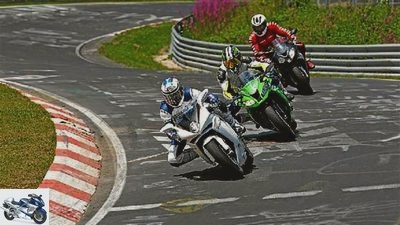
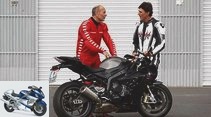
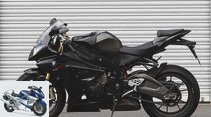

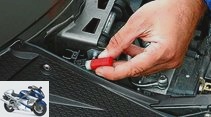
18th photos
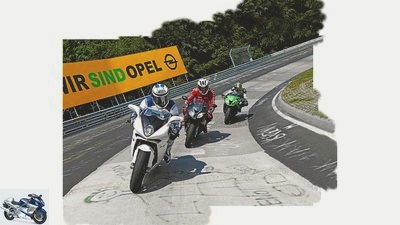
1/18
What counts on the road is all the more important on the Nordschleife: a swelling torque curve and an uncomplicated, transparent chassis.
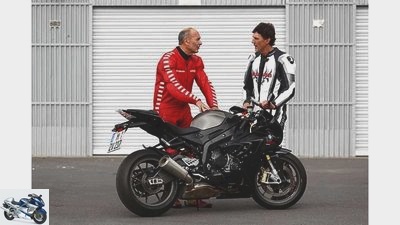
2/18
The Nordschleife legend Helmut Dahne was particularly surprised by the accuracy of the BMW chassis. And the power available in all situations in connection with the good running smoothness was also convincing.
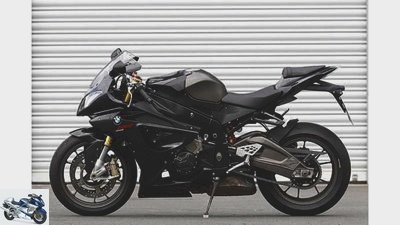
3/18
For his smooth, rounded driving style, Dahne prefers brakes that are not so snappy when braking slightly. However, the test crew gave it top marks.
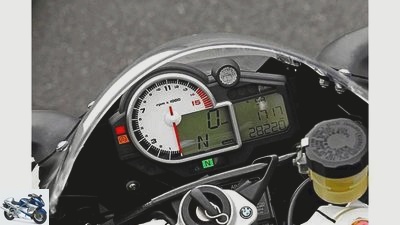
4/18
Clearly readable tachometer, bright gearshift light, indicator lights for ABS and TC.
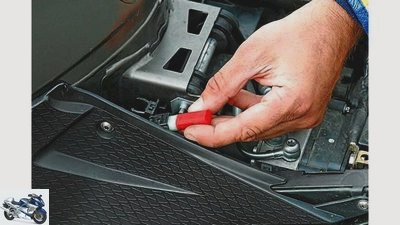
5/18
A separate plug under the seat enables the slick mode with the sharpest ABS and TC coordination.

6/18
You should treat yourself to this extra, the automatic gearshift makes changing gears a pleasure.

7/18
Helmut Dahne on the Kawasaki ZX-10R: The top performance of the Kawasaki is enormous. But a correspondingly strong middle would be more important. Pure top performance is not as important here as it is on pure racetracks. The chassis presents itself without ups and downs…
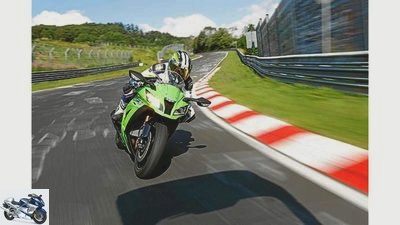
8/18
…In terms of neutrality and steering precision, the ZX-10R is ahead of the other two machines. But it offers the easiest handling of the three.

9/18
All the information you need at a glance. Traction control and engine mapping are easy to switch.
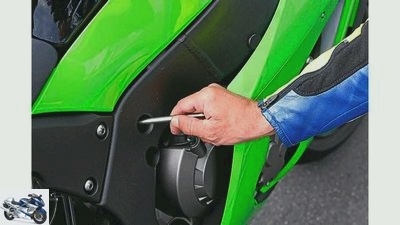
10/18
Cramp: To access the rebound adjuster of the shock absorber, a long screwdriver must be inserted at an angle.
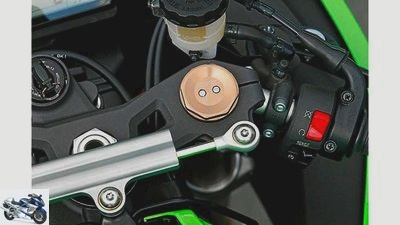
11/18
The big piston fork works sensitively, the steering damper is absolutely necessary.
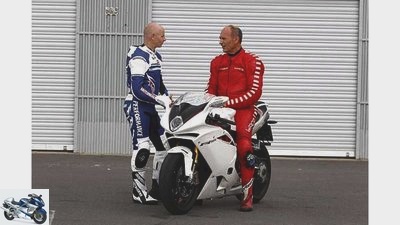
12/18
Helmut Dahne was particularly impressed by the chassis qualities of the MV. The sitting position, which is strenuous in everyday life, is not a disadvantage on the Nordschleife, especially when driving actively, as it integrates the rider perfectly into the bike.
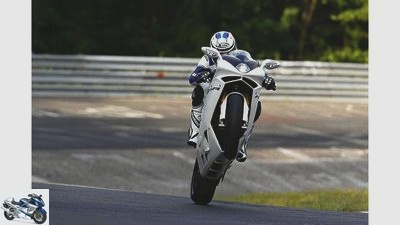
13/18
The lower speed range is less in demand here, as the short-stroke Corsacorta engine shines with a powerful middle and even power delivery. Only the strong vibrations disturb.
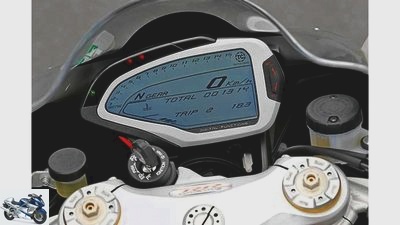
14/18
Sparkling indicator lights and shift light, but a lot of information in the MV cockpit.
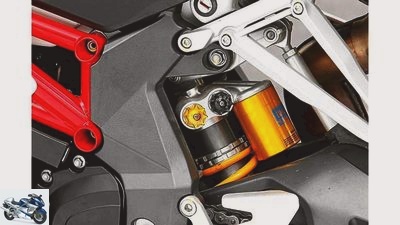
15/18
The TTX shock absorber is extremely tightly tuned, but also provides ample damping after a number of laps.

16/18
Noble arrangement: Ohlins fork and steering damper. Two mappings can be selected with the start button.

17/18
With a lot of momentum over the asphalt … before three superbikes fight one last battle.
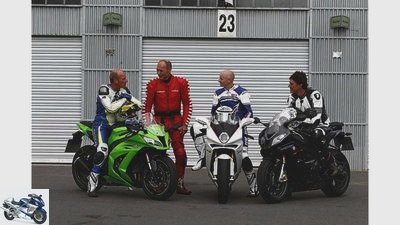
18/18
In the end, everyone agrees: the MV chassis with the BMW engine would be perfect, but it doesn’t exist. The bottom line, however, is that the BMW offers the best overall package of all three speedsters.
Comparison test: Superbikes with 200 hp
BMW S 1000 RR, Kawasaki ZX-10 R and MV Agusta F4 RR in the test on the Nordschleife
A free lap on the Nordschleife is amazing, and somehow motorcycles with around 200 hp are too. So what could be more natural than to have the BMW S 1000 RR, Kawasaki ZX-10R and MV Agusta F4 RR compete here?
Blue, white, red, yellow. The Nordschleife shines like a spring-colored patchwork quilt in the bright morning sun. The fan paintings, remnants of the 24-hour race, decorate the gray dragon with their blaze of color. There is still silence at seven in the morning. Only the first marshals roll out and take their positions. The MOTORRAD action team’s perfection training starts in one hour. Free laps, full shower over the Dottinger Hohe included. The opportunity to see the three biggest powerhouses on the market, BMW S 1000 RR, Kawasaki ZX-10R and MV Agusta F4 RR, to feel the teeth. Also there: Nordschleife intimate partner Helmut Dahne, who is supposed to contribute his impressions.
Buy complete article
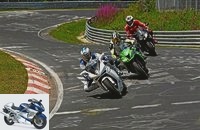
Comparison test: Superbikes with 200 hp
BMW S 1000 RR, Kawasaki ZX-10 R and MV Agusta F4 RR in the test on the Nordschleife
S 1000 RR with 193 hp deliberately kept the ball flat, the magical 200 hp mark was tangible for the first time. And shortly afterwards it was also put to the test in practice.
Only Kawasaki has so far held against it with the ZX-10R and confidently proclaimed 200 hp. Now, of all people, the small MV manufacturer joins this illustrious group with the F4 RR. And lays, freely according to the motto "my house, my yacht, my riding stables" one more with 201 hp. Strong stuff. For this purpose, the MV developers designed a new engine with a 79 / 50.9 mm bore and stroke much shorter-stroke than the conservatively designed ZX-10R unit (76/55 mm) and close to the extremely short-stroke BMW engine (80/49 , 7 mm). But the obligatory visit to the test bench quickly shows that neither in Munich, nor in Varese or Akashi, the trees grow into the sky. With 194 measured horsepower, the Kawasaki just missed the factory specification. The 190 PS strong MV misses the specifications a little more clearly. Only the BMW, which is our long-term test copy equipped with a new inlet camshaft, surpasses the paper version with 195 hp. So the roles are distributed?
The MV Agusta hangs on the throttle rope and pulls like a bull.
Wait. On the one hand, differences in performance of this magnitude are relevant in everyday life, at best at the regulars’ table. And on the other hand, how is it called so beautifully? Power is nothing without control. I agree. What good is the biggest hammer if you can’t swing it cleverly? In this regard, the Nordschleife has already let some potent sports bolts stumble. Because here sheer top performance is nothing without a reliable, precise chassis. There is hardly a harder touchstone than this 20.8 kilometer long Eifel roller coaster. So, the engines and tires are on temperature. High barrier and into pleasure. First of all, the green ZX-10R shines. Sharp nimbly through the winding curves in the Hatzenbach, willingly swirl through the narrow Wehrseifen passage and effortlessly unravel the sequence of curves on the Hedwigshohe. It’s a relaxed and brisk affair. The spring elements soak up the patches perfectly. That doesn’t stress and makes you afloat in a relaxed way. However, when the pace is properly increased, the first shadows appear. As the speed increases, there is movement in the chassis. Which in itself is not a problem because it can be felt well and shows that the limit area is approaching.
But at the same time the accuracy with which the Kawa takes fast turns is dwindling, which Helmut Dahne also complains about. The ZX-10R, soled with Bridgestone BT 016 in special identification, does not deliver the crisp precision as the competitors rolling on Pirelli Supercorsa and Metzeler Racetech. Two juicy laps drove the shock absorber to its limits. A full pound through the Fuchsrohre at a good 240 km / h, in the valley of which chains stretched too tightly collapse, the compressions of the Ex-Muhle, Karussell and Brunnchen, plus the violent power increase up the kettle, that is enormous stress for them Spring elements. Practically unimpressed by turning the adjusting screws, there is hardly enough damping to elicit from the shock absorber to ensure calm in the hindquarters. In addition, the comparatively strongest righting moment when braking and on bumps in an inclined position spoils the harmony.
Always in front: the MV Agusta F4 RR (left in the picture).
The MV Agusta offers the technical contrast program. Even after several laps it lies as if it had been concreted in, and provides crystal-clear information from the road surface. In addition, the F4 RR has become more agile thanks to its light forged wheels. Even if it doesn’t drift through changing curves as quickly as the BMW or even the Kawasaki. Especially at high speeds, it still requires clear instructions when changing direction. But for that, she stabs the corners with a purposefulness that is simply fantastic. For example, when the long climb up the Kessel at a terrifying pace, where the route is exploited to the edge with a respectable slope. The recording notes 39 degrees of incline and speed 180, there is not much room for uncertainties. Or in blind corners such as the Pflanzgarten, which require the greatest possible precision in the selection of lines. At MV, the pilot knows one hundred percent what’s going on.
The extremely stiff chassis and the sporty suspension set-up make the MV in no way fidgety on the not always smoothly leveled Nordschleife. The Ohlins spring elements process patches and edges very sensitively and work together extremely harmoniously, which gives the MV a superb balance. Even if at kilometer twelve in the kettle the load before the left bend with almost 200 things is ripped wildly from right to left, the MV remains calm, while the Kawasaki distributes vigorously with the handlebars. In terms of chassis technology, the MV is a force. Who is most likely to find a suitable opponent in the BMW. The white-blue Express does not achieve the bombastic stability of the MV. Nevertheless, the accuracy and security with which the BMW is following the course are convincing. Which is why she sees Helmut Dahne on par with Honda’s Fireblade on this point. The Kawa only plays third fiddle. But maybe her powerful engine can put things right again? After all, it is on par with the BMW in terms of performance. But what matters more here on the Nordschleife than in everyday life is pressure from the middle. It should be 7000, better 8000 revolutions for the Kawasaki fireworks to ignite properly. In connection with the long first three courses, the temperament sinks a bit in some slow corners where a powerful start is required. For example in the sections Ex-Muhle, Bergwerk or at the exit of the Adenauer Forest. But the Kawa goes off like a stick. The traction control prevents corridor damage in tricky passages very effectively. And the Zehner roars over the Schwedenkreuz, the long ascent to the carousel, with boisterous revving, so that it lifts the front wheel on every bump that presents itself. But these moments are – as in real life – rare on the Nordschleife. In the narrower passages, it is more noticeable that the Kawasaki delays a little and does not implement the commands of the gas hand as accurately as the others. And that the transmission is not one of the smoothest. The MV is downright greedy on the throttle. Pull loose like a bull – as long as the speed doesn’t drop below 6000 rpm. Which hardly happens thanks to the short translation.
The wavy performance curve under this brand is practically negligible. However, the pilots exercise a certain degree of caution out of tight, tricky corners. Because the MV’s traction control does not give clear feedback about your intervention. It is all the nicer that the F4 RR has extremely fine load-changing manners. From 12,000 rpm, it really picks it up again. In addition, the pilot gets a wonderful fanfare roared under the helmet. And operated with a little care, the gears can be changed safely despite the long shifting distances. But exactly where the MV mobilizes an extra portion of power, the coordination does not seem optimal. If the pilot plays with the throttle valve between 11,000 and 13,000 rpm in order to adjust the speed, the injection messes up a few times with a naughty jerk. It is precisely that range around 11,700 rpm in which the variable intake funnels come into action. Such bad habits are alien to the BMW. It hangs perfectly on the stiff throttle and pushes, pushes, pushes out of the corners with power. Which also impressed Helmut Dahne.
Where the MV draws its start from the short gear ratio and the Kawa from high revs, with the BMW it is simply the power of the four-cylinder that shows itself in the fullest performance curve. This is how the BMW powers even exhausting passages most powerfully and confidently. Only once can all the power of these motors be released unchecked: on the gallows head. Long right-hand bend over a knoll, which is taken at around 140 km / h and ends in the Dottinger Hohe. That almost two-kilometer full-throttle straight on which only one thing counts: power. In the first half, the roadway rises 35 meters within a kilometer. MV and Kawa go far to stay on the heels of the BMW. Head on the tank, retract your elbows, make it as small as possible and tease out every mph. Full throttle and around 30 seconds to breathe. But while the two are in a head-to-head race, the BMW irresistibly pulls away. The automatic gearshift, which MV and Kawasaki do not have for money or good words, perfectly conceals the somewhat resinous gearbox, seamlessly lined up gear after gear. So, where the track begins to climb, the BMW briefly scratches the 300 mark, while the MV duels with the Kawasaki and runs into the limiter at 289 km / h.
As impressively as the BMW demonstrates its motor dominance here, it goes to work at the end of the straight, braking into the narrow Hohenrain chicane. The Kawa shines with enormous braking stability. Their ABS-reinforced stoppers decelerate linearly and consistently, but without showing excessive bite. This is provided by the ABS-free monobloc pliers from the MV, including superb dosing. Even more vehemently, the BMW brakes, flanked by a sovereignly acting ABS, grip with little manual force. Burning up the kinetic energy with merciless consistency. So the BMW not only secures a small lead when turning onto the highest point of the route, the short straight at the old entrance at T13, but also overall.
After all, it is not an outstanding ability, but the sum of its qualities that makes the S 1000 RR so strong here too. Even without 200 hp.




18th photos
Pictures: Comparison test: Superbikes with 200 HP
To home page
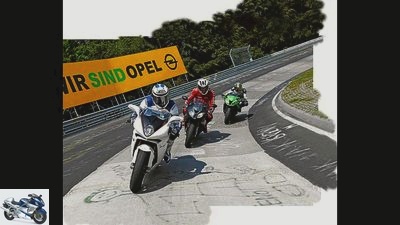
fact
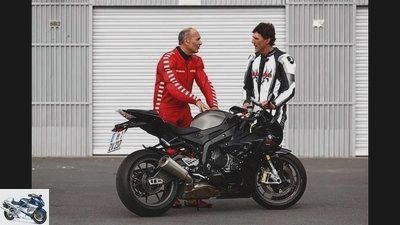
fact
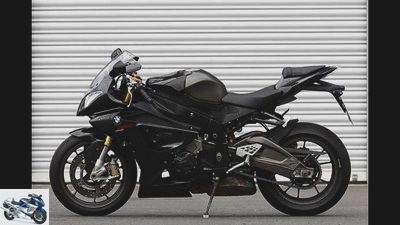
fact
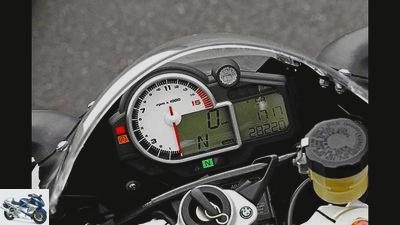
fact
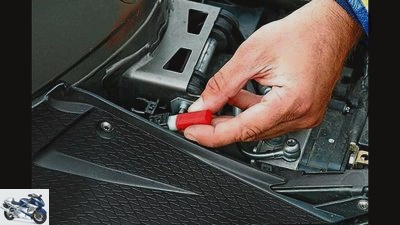
fact
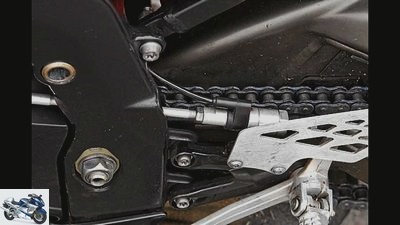
fact

fact
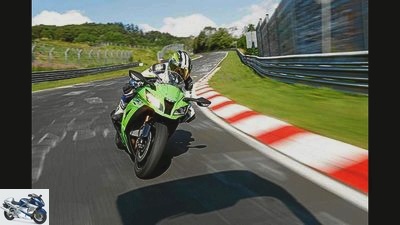
fact
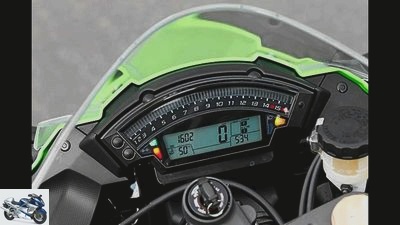
fact
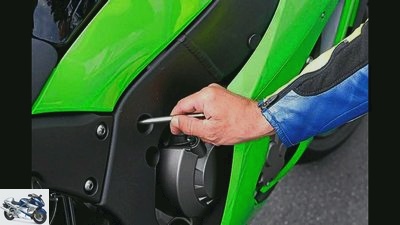
fact
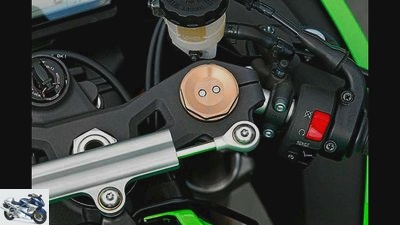
fact

fact

fact

fact

fact
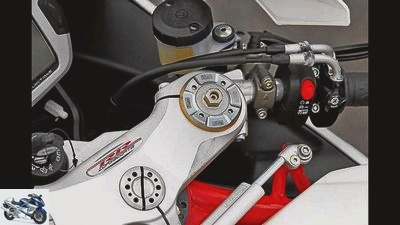
fact
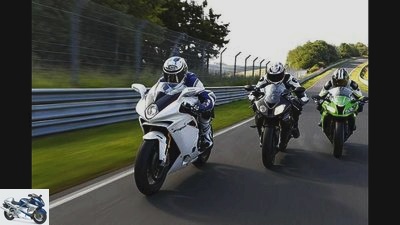
fact
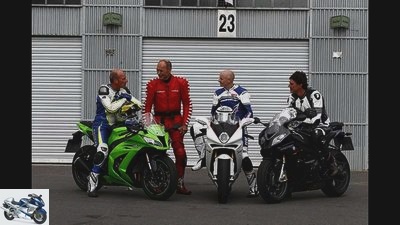
fact
Power on the crankshaft: measurements on the Dynojet roller test bench 250, corrected according to 95/1 / EG, maximum possible deviation ± 5%
The full load curves are clear. Except for a small range around 6000 rpm, the BMW outperforms the competition. Most noticeable: It is the only one that manages to combine a decent torque curve with immense top performance, which speaks for the construction. The MV only developed from 6000 / min, the Kawasaki 2000 / min later really emphasis. The moment at the MV is easy to see when the intake paths are shortened at 11,700 rpm to improve performance.
Pulling force 2nd gear: The Kawasaki has by far the longest geared second gear. It reaches almost 30 km / h further than with the very short translated MV. For example, if you accelerate out of the Ex-Mill or the mine curve at 80 km / h, the Kawasaki has significantly less punch available for the following uphill sections.
Pulling force 3rd gear: A similar picture in third gear. The MV initially benefits from the short translation. But the gear is quickly turned down and has to be shifted to the next higher. This reduces the pulling force, while BMW and Kawasaki, which is also the lightest, can continue to turn.
BMW S 1000 RR
BMW-S-1000-RR.
engine
Water-cooled four-cylinder four-stroke in-line engine, two overhead, chain-driven camshafts, four valves per cylinder, rocker arm and rocker arm, wet sump lubrication, injection, Ø 48 mm, regulated catalytic converter, alternator 434 W, battery 12 V / 10 Ah, mechanically operated multi-plate oil bath clutch , (Anti-hopping), six-speed gearbox, chain, secondary ratio 44:17. Bore x stroke 80.0 x 49.7 mm, displacement 999 cm³, compression ratio 13.0: 1. Rated output 142.0 kW (193 hp) at 13,000 rpm. Max. Torque 112 Nm at 9750 rpm.
landing gear
Bridge frame made of aluminum, upside-down fork, Ø 46 mm, steering damper, adjustable spring base, rebound and compression damping, two-arm swing arm made of aluminum, central spring strut with lever system, adjustable spring base, rebound and compression damping, double disc brake at the front, Ø 320 mm, four-piston fixed calipers , Rear disc brake, Ø 220 mm, single-piston floating caliper. Cast aluminum wheels 3.50 x 17; 6.00 x 17, tires 120/70 ZR 17; 190/55 ZR 17. Tires tested: Metzeler Racetec K3 Interact.
Dimensions + weights Wheelbase 1432 mm, steering head angle 66.1 degrees, caster 96 mm, spring travel f / h 120/130 mm, seat height * 810 mm, weight with a full tank * 208 kg, load * 197 kg, tank capacity / reserve 17.5 / 4.0 liters . Guarantee: two years. Service intervals: 10,000 km. Colors: silver, gray, green, white / red / blue. Price: 15,800 euros
Price test motorcycle: 17,380 euros (additional costs approx. 269 euros)
Kawasaki ZX-10R
Kawasaki ZX-10R.
engine
Water-cooled four-cylinder four-stroke in-line engine, a balance shaft, two overhead, chain-driven camshafts, four valves per cylinder, bucket tappets, wet sump lubrication, injection, Ø 47 mm, regulated catalytic converter, 424 W alternator, 12 V / 10 Ah battery, mechanically operated multi-disc oil bath clutch , (Anti-hopping), six-speed gearbox, O-ring chain, secondary ratio 39:17. Bore x stroke 76.0 x 55.0 mm
Displacement 998 cm³, compression ratio 13.0: 1, rated output 147.0 kW (200 hp) at 13,000 rpm. Max. Torque 112 Nm at 11 500 rpm.
landing gear
Bridge frame made of aluminum, upside-down fork, Ø 43 mm, steering damper, adjustable spring base, rebound and compression damping, two-arm swing arm made of aluminum, central spring strut with lever system, adjustable spring base, rebound and compression damping, double disc brake at the front, Ø 310 mm, four-piston fixed calipers , Rear disc brake, Ø 220 mm, single-piston floating caliper, traction control. Cast aluminum wheels 3.50 x 17; 6.00 x 17. Tire 120/70 ZR 17; 190/55 ZR 17. Tires tested: Bridgestone BT 016 hi. "CC".
Dimensions + weights Wheelbase 1425 mm, steering head angle 65.0 degrees, caster 107 mm, spring travel f / h 120/125 mm, seat height * 810 mm, weight with a full tank * 203 kg, payload * 175 kg, tank capacity 17.0 liters. Guarantee: two years. Service intervals: 6000 km. Colors: green / black, black. Price: 15,495 euros
Price test motorcycle: 16,495 euros (additional costs around 170 euros)
MV Agusta F4 RR
MV Agusta F4 RR
engine
Water-cooled four-cylinder four-stroke in-line engine, two overhead, chain-driven camshafts, four valves per cylinder, bucket tappets, wet sump lubrication, injection, regulated catalytic converter, 350 W alternator, 12 V / 9 Ah battery, hydraulically operated multi-plate oil bath clutch, six-speed gearbox, O-ring Chain, secondary ratio 41:15. Bore x stroke 79.0 x 50.9 mm, displacement 998 cm³. Compression ratio 13.4: 1. Rated output 147.7 kW (201 hp) at 13,400 rpm. Max. Torque 114 Nm at 9200 rpm.
landing gear
Trellis frame made of steel with screwed cast aluminum parts, load-bearing motor, upside-down fork, Ø 43 mm, adjustable spring base, rebound and compression damping, single-sided swing arm made of aluminum, central spring strut with lever system, adjustable spring base, rebound and compression damping, double disc brake at the front, Ø 320 mm, four-piston fixed calipers, rear disc brake, Ø 210 mm, four-piston fixed calipers, traction control.
Cast aluminum wheels 3.50 x 17; 6.00 x 17. Tire 120/70 ZR 17; 190/55 ZR 17. Tires tested: Pirelli Diablo Supercorsa SP.
Dimensions + weights Wheelbase 1430 mm, steering head angle 66.0 degrees, caster 100 mm, spring travel f / r 120/120 mm, seat height * 830 mm, weight with a full tank * 213 kg, load 182 kg, tank capacity 17.0 liters. Guarantee: two years. Service intervals: 6000 km. Colors: red / white Price: 22,900 euros (additional costs around 250 euros)




18th photos
Pictures: Comparison test: Superbikes with 200 HP
To home page

fact

fact

fact

fact

fact

fact

fact

fact

fact

fact

fact

fact

fact

fact

fact

fact

fact

fact
That was convincing in the overall assessment "little black" the test crew: good running culture, accuracy, smooth driving style.
What counts on the road is all the more important on the Nordschleife: a swelling torque curve and an uncomplicated, transparent chassis. The question of whether 190 or 200 hp is secondary here, off the racetrack. The perfect bike would be for Helmut Dahne "the chassis of the MV with the engine of the BMW". But there isn’t. The ZX-10R would need more pulling power and chassis reserves on the Nordschleife, the MV with its first-class chassis would need even more polished engine manners. Even without achieving the great maneuverability of the Kawasaki or the exemplary stability or emotionality of the MV: the bottom line is that the BMW offers the best overall package.
Related articles
-
Comparison test: super sports cars under 1000 cubic meters from MV Agusta, Ducati and Kawasaki
Jahn 46 pictures Jahn 1/46 Kawasaki ZX-6R 636 Jahn 2/46 But the Evo is not alone in this. All three bikes rock the ring during the test. Jahn 3/46 ……
-
BMW F 800 R, Kawasaki Z 800, MV Agusta Brutale 800 and Yamaha FZ8 in the test
Jahn 29 pictures Jahn 1/29 A comparison of four 800 class motorcycles: BMW F 800 R, Kawasaki Z 800, MV Agusta Brutale 800 and Yamaha FZ8. Jahn 2/29 How …
-
Comparison test Kawasaki Z 900, MV Agusta Brutale 800 RR Yamaha MT-09 SP
fact / Joachim Schahl 21 pictures fact / Joachim Schahl 1/21 Kawasaki Z 900, MV Agusta Brutale 800 RR and Yamaha MT-09 SP promise undisguised driving pleasure …
-
Comparison test of the 1000 super sports car, part 1
Jahn comparison test 1000 super sports car, part 1 The full range Slim, strong, ready to attack, with the Suzuki GSX-R 1000 is the field of …
-
Kawasaki ZX-10R and BMW S 1000 RR in a comparison test
www.bilski-fotografie.de 25 pictures www.bilski-fotografie.de 1/25 Let’s first take a look at the new Kawasaki ZX-10R. www.bilski-fotografie.de …
-
Top test: Kawasaki ZX-10R old-new
Top test: Kawasaki ZX-10R old / new The double top test of the old and new 10-ninja The ZX-10R has never lacked power. But now …
-
Comparison test: MV Agusta Brutale, Triumph Street Triple, KTM Super Duke
fact comparison test: MV Agusta Brutale, Triumph Street Triple, KTM Super Duke Three naked bikes in direct comparison There are motorcycles for which …
-
Comparison test: KTM Super Duke R against MV Agusta Brutale 990 R
Comparison test: KTM Super Duke R against MV Agusta Brutale 990 R Sporty naked bikes in the test Content of A feast for the senses: The new MV …
-
Comparison test BMW S 1000 RR, Kawasaki ZX-10R and Yamaha YZF-R1M
22 images 1/22 BMW S 1000 RR, Kawasaki Ninja ZX-10R and Yamaha YZF-R1M. 2/22 Yamaha YZF-R1M. 3/22 BMW …
-
fact 7 pictures fact 1/7 MV Agusta F4 RR, the newcomer to the 200 hp league – noble, expensive, super fast. fact 2/7 Still a picture of an athlete, 4400 …